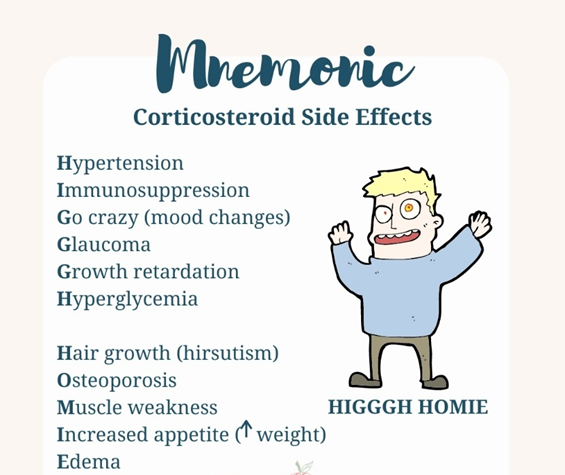A client who has uncontrolled diabetes mellitus visits a clinic. Client reports numbness and tingling in the feet which keeps them up at night. The nurse explains this condition as a nerve disorder called peripheral neuropathy. Which of the following statements by the client indicates an understanding of what causes this condition?
"The nerves just go to sleep when I lie down because no message gets from my brain to the spinal cord."
"The nerve damage may occur for unknown reasons in any individual."
"The older I get, there is less blood flowing to my feet."
"The elevated blood sugar from my diabetes can cause underlying nerve damage."
The Correct Answer is D
"The nerves just go to sleep when I lie down because no message gets from my brain to the spinal cord." is incorrect because it does not accurately describe the mechanism of peripheral neuropathy. Peripheral neuropathy in diabetes is not simply the nerves "going to sleep" due to lack of communication between the brain and spinal cord.
Choice B Reason:
"The nerve damage may occur for unknown reasons in any individual" is incorrect because while the exact cause of peripheral neuropathy may not always be known, in the context of diabetes mellitus, the link between elevated blood sugar levels and nerve damage is well-established.
Choice C Reason:
"The older I get, there is less blood flowing to my feet. “is incorrect because while decreased blood flow (ischemia) can contribute to peripheral neuropathy in some cases, the primary mechanism in diabetic neuropathy is nerve damage due to hyperglycemia rather than reduced blood flow.
Choice D Reason:
"The elevated blood sugar from my diabetes can cause underlying nerve damage." Peripheral neuropathy is a common complication of diabetes mellitus, particularly when the condition is uncontrolled. Elevated blood sugar levels over time can lead to damage to the nerves, especially those in the feet and legs. This damage can result in symptoms such as numbness, tingling, burning sensations, or pain in the affected areas.
Nursing Test Bank
Naxlex Comprehensive Predictor Exams
Related Questions
Correct Answer is ["A","B","D","E"]
Explanation
Choice A Reason:
Memory loss is correct. Memory loss can occur in individuals with PML due to damage to the white matter of the brain caused by the JC virus infection. This damage can affect cognitive function, including memory.
Choice B Reason:
Clumsiness is correct. Clumsiness or lack of coordination is a common neurological symptom of PML. It can result from damage to areas of the brain responsible for motor function and coordination.
Choice C Reason:
Tardive dyskinesia is incorrect. Tardive dyskinesia is a movement disorder characterized by involuntary, repetitive movements, often involving the face, lips, tongue, and limbs. While tardive dyskinesia can occur as a side effect of certain medications, it is not typically associated with PML.
Choice D Reason:
Seizures is correct. Seizures can occur in individuals with PML due to the involvement of the brain's white matter by the JC virus infection. Seizures may present as sudden, uncontrolled movements, altered consciousness, or other neurological symptoms.
Choice E Reason:
Vision difficulty is correct. Vision difficulties, including blurred vision, visual field deficits, and other visual disturbances, are common manifestations of PML. Damage to the optic nerves or areas of the brain involved in visual processing can result in vision difficulties.
Correct Answer is ["C","D","E"]
Explanation
Choice A Reason:
Bladder spasms are not commonly reported as adverse effects of methylprednisolone. However, bladder dysfunction can occur in individuals with multiple sclerosis due to the disease process itself, but it is not specifically related to corticosteroid therapy.
Choice B Reason:
Hypotension is not a common adverse effect of methylprednisolone. In fact, corticosteroids can often lead to fluid retention and sodium retention, which can contribute to hypertension rather than hypotension.
Choice C Reason:
Delayed wound healing is correct. Corticosteroids can impair the body's ability to heal wounds by suppressing the inflammatory response and collagen synthesis. Therefore, clients receiving methylprednisolone may experience delayed wound healing, which can be problematic, especially in individuals with pre-existing wounds or undergoing surgical procedures.
Choice D Reason:
Hirsutism (excessive hair growth, especially in women) can occur with long-term corticosteroid use due to the effect of steroids on hair follicles. It is a possible adverse effect of methylprednisolone.
Choice E Reason:
Hyperglycemia is correct. Corticosteroids can increase blood glucose levels by promoting gluconeogenesis, reducing glucose uptake by tissues, and inducing insulin resistance. Clients receiving methylprednisolone may develop hyperglycemia, which can be particularly concerning for individuals with diabetes or those at risk of developing diabetes.

Whether you are a student looking to ace your exams or a practicing nurse seeking to enhance your expertise , our nursing education contents will empower you with the confidence and competence to make a difference in the lives of patients and become a respected leader in the healthcare field.
Visit Naxlex, invest in your future and unlock endless possibilities with our unparalleled nursing education contents today
Report Wrong Answer on the Current Question
Do you disagree with the answer? If yes, what is your expected answer? Explain.
Kindly be descriptive with the issue you are facing.
